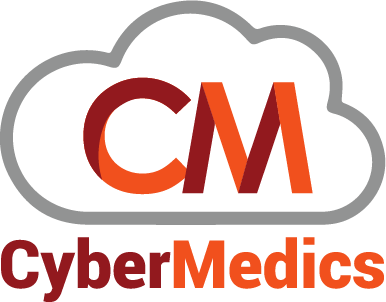
What is Enterprise Change Management: A Complete Run-down
Picture this: you’re in charge of a major project that could make or break your company’s success. Everything is going smoothly until suddenly, someone decides to switch up the game plan. Panic sets in, chaos ensues, and before you know it, you’re knee-deep in a mess that feels impossible to fix.
That’s when enterprise change management comes into play. Also known as ECM, it is a process aimed at ensuring that changes to the organization are managed in a coordinated and structured way. At CyberMedics, we’re going to run you through exactly what enterprise change management is, and how it can help your company succeed.
Let’s go.
Table of contents
What is Enterprise Change Management?
Put simply, enterprise change management (ECM) is a set of processes and activities designed to help organizations manage changes in their environment. It involves managing the impact of any changes – whether they be big or small – on day-to-day operations, personnel, customers, and other stakeholders. It helps to ensure that changes are implemented in a consistent, coordinated way across the entire organization.
What Does Enterprise Change Management Include?
At its core, enterprise change management includes four main components:
Communication: Ensuring that everyone across the organization is informed about any changes and how they might affect their work.
Planning: Developing a plan to ensure that changes are implemented in the most effective and efficient way.
Organizational Structure: Analyzing the current organizational structure to determine how any changes might affect it, and what updates may be necessary.
Skills/Resources: Identifying any additional skills or resources needed to successfully make the change.
By leveraging these components, enterprise change management helps organizations to minimize the risk of disruption and ensure that changes are implemented quickly and effectively.
The Benefits of Enterprise Change Management
The truth is, the modern business environment is incredibly dynamic and unpredictable, thanks to factors like globalization, digital transformation, and ever-changing customer demands. So, what does this mean for businesses?
It means that organizations need to be agile and adaptable to survive and thrive. They need to constantly evolve and pivot to stay ahead of the competition. And that’s where enterprise change management comes in.
Minimizes the risks associated with big changes within an organization.
Ensures that everyone is on the same page and working towards a common goal.
Helps to ensure that big changes align with the overall strategic goals of the organization.
A well-thought-out change management process can help to ensure that changes are implemented quickly and efficiently, with minimal disruption, costly mistakes, and delays.
Think of it this way: a well-executed ECM strategy is like having a trusty GPS to guide you through the twists and turns of today’s business world. It helps you anticipate and respond to changes, ensuring that your organization remains resilient and prepared for whatever challenges lie ahead.
Types of Enterprise Change
Strategic Change Management: Involves the organization adapting to new strategies, goals, or objectives. This may include entering new markets, mergers and acquisitions, or adjusting business models to remain competitive in the changing market landscape.
Technological Change Management: Focuses on the implementation of new technologies, systems, or tools to improve organizational efficiency and productivity. This type of change may involve software updates, hardware upgrades, or the adoption of new digital platforms to support business operations.
Structural Change Management: Entails reorganizing the company’s structure, such as reporting lines, departmental roles, and responsibilities. This can be driven by growth, cost optimization, or the need to create more effective collaboration between teams.
Cultural Change Management: Aims to shift the organization’s culture, values, and beliefs to align with its overall goals and vision. This may include promoting a culture of innovation, fostering diversity and inclusion, or embracing a more customer-centric approach.
Process Change Management: Deals with the redesign or improvement of internal processes and workflows to increase efficiency, reduce errors, or enhance overall performance. This may involve streamlining operations, implementing automation, or adopting best practices and methodologies, like Agile or Lean.
Workforce Change Management: Focuses on the people aspect of change within an organization, such as re-skilling, talent management, or employee engagement. This can include changes in recruitment strategies, performance management systems, or the implementation of new training programs to develop employees’ skills and competencies.
Regulatory Change Management: Ensures the organization remains compliant with evolving laws, regulations, and industry standards. This type of change management includes risk assessment, policy updates, and the implementation of appropriate controls and procedures to stay in compliance with new regulatory requirements.
Crisis Change Management: Addresses unexpected events, emergencies, or crises that can impact an organization’s stability and require immediate action. This involves developing contingency plans, creating a crisis management team, and implementing effective communication strategies to minimize disruptions and ensure a swift return to normal operations.
Enterprise Change Management Tools and Techniques
Now that we’ve covered the importance of enterprise change management, let’s talk about some handy tools and techniques that can help make your ECM efforts even more successful.
Change impact analysis: One of the first things you’ll want to do when planning for change is to understand its potential impact on your organization. Change impact analysis helps you identify the areas, processes, and people that will be affected by the change, allowing you to develop targeted strategies to address these impacts.
Stakeholder mapping: As we mentioned earlier, involving key stakeholders is crucial to the success of your change initiatives. Stakeholder mapping is a technique that helps you identify and prioritize these stakeholders, so you know who to engage, when, and how. This ensures you have the right people on board to support and drive the change.
Resistance management: Change can be hard, and it’s natural for people to resist it. Resistance management is all about understanding the root causes of resistance and developing strategies to address and overcome these barriers. By tackling resistance head-on, you can help smooth the path to successful change.
Change readiness assessments: Before implementing a change, it’s important to gauge how prepared your organization is to embrace it. Change readiness assessments help you evaluate your organization’s capacity for change and identify any gaps or weaknesses that need to be addressed. This ensures you have a solid foundation in place before diving into the change process.
Project management tools: Managing change often involves coordinating multiple tasks, resources, and stakeholders. Project management tools like Trello, Asana, or Microsoft Project can be incredibly helpful for keeping track of your change initiatives, ensuring deadlines are met and progress is ensuring deadlines are met and progress is made.
Change management software
Last but not least, you might consider investing in specialized change management software, like ChangeScout or Prosci ADKAR. These tools are designed specifically to support change management initiatives, offering features like stakeholder management, change tracking, and analytics to help you stay on top of your change efforts.
Best Practices for Effective Enterprise Change Management
Alright, so now that we’ve established the importance of enterprise change management, let’s dive into some best practices that can help make your ECM initiatives successful.
Set clear objectives: Before you embark on any change initiative, it’s essential to define your goals and objectives clearly. Ask yourself, “What are we trying to achieve with this change?” Having a clear vision will help guide your efforts and ensure everyone involved is on the same page.
Involve key stakeholders: Change is always easier when everyone is on board. So, make sure to engage key stakeholders, such as employees, managers, and even customers, early on in the process. Their input, feedback, and support can be invaluable in shaping the direction of your change initiatives.
Maintain open communication: Communication is the lifeblood of any successful change management effort. Keep the lines of communication open, and make sure everyone is informed about the changes, their impact, and the progress being made. Transparency can help build trust and reduce resistance to change.
Provide support and training: Change can be challenging, especially when it requires learning new skills or adapting to new processes. Offer support, training, and resources to help employees adjust to the changes and develop the necessary skills to succeed in the new environment.
Celebrate milestones and successes: Change can be a long and arduous journey. Recognizing and celebrating milestones and achievements along the way can help keep morale high and maintain momentum. Plus, who doesn’t love a good celebration?
Monitor progress and adjust as needed: Finally, remember that change management is an ongoing process. Continuously monitor the progress of your change initiatives, and adjust as needed.
Propel Your Enterprise Change Management Success with CyberMedics
When it comes to enterprise change management, there is no one-size-fits-all solution. Every organization has its own unique needs and challenges that must be addressed — but with the right approach, they can achieve successful change management outcomes. By following best practices, leveraging the right tools and techniques, and involving key stakeholders, you can transform change from a daunting challenge into a fantastic opportunity for growth and innovation.
And guess what? CyberMedics is here to help. As a custom software development company specializing in automating inefficient tasks and processes, we understand the importance of effective ECM. We always work closely with your in-house team to develop tailored solutions and digital tools that meet their unique requirements and help them drive successful change initiatives, as we did for Security 101.
Ready to start your enterprise change management journey? Reach out to us today for a FREE consultation, and let’s take it from there!
